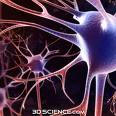

Neurons and Muscle
BACKGROUND AND PREPARATION
- Preview text chapters, lab manual, Powerpoint
presentations, web resources
- Print out handouts for this section of course
- View Body Smart Nervous System section [link]
- Check out "Neuroscience for Kids" website--it's
the best! [link]
- See animations on Neurons and Synaptic Activity [link]
[need Martini text website access--link]
- Nervous System Interactive Crossword Puzzle [link]
|
| IN-CLASS ACTIVITIES
Neurons
- Millionaire Game--Spinal Cord [PPT
download]
-
 Class presentation: Neurons and neural tissue
[PPT download] [Tegrity
recording of PowerPoint] Class presentation: Neurons and neural tissue
[PPT download] [Tegrity
recording of PowerPoint]
- Animation of action potential in neuron [link]
- Fun neuron models--do at home! [link]
- View neurons and other nervous tissue in
microscope. Great nervous system images [link]
- Virtual Leech Neurophysiology Lab (from
Howard Hughes Medical Institute) [link]
- Touch Discrimination lab [link
to website background] [Sensory
Homunculus images]
- Wish list for Neuron Histology and
Physiology [Word download]
- Millionaire Game--Nervous System [PPT
download]
- Animations of autonomic innervation from spinal
cord and brain to targets [link]
[need Martini text website access--link]
- Millionaire Game--Autonomics [PPT
download]
- Autonomic Jeopardy Game [PPT
download][Sensory
Homunculus images]
Muscle
-
 Class presentation: Muscle tissue and how it
works [PPT
download] [Tegrity
recording of PowerPoint] [Tegrity
addendum] Class presentation: Muscle tissue and how it
works [PPT
download] [Tegrity
recording of PowerPoint] [Tegrity
addendum]
- Animation of muscle structure and "sliding filament
theory" [link][similar
animation from Martini text--link]
- Great muscle review--types, function,
actin-myosin [link]
- Nice animation of muscle action potential and
flow /role of calcium [link]
- Sequence of events from Motor Neuron action
potential to contraction of muscle at cellular level. Be sure you see
this animation (from the Brain Top to Bottom) [link]
- See histological basis for muscle function in
microscope. Identify different muscle types--skeletal, smooth,
cardiac.
- EMG's to investigate muscle function in our own
bodies. Recordings of EMG's taken during
lab [link]
- Wish List for Muscle Histology and Physiology (word
download)
|
| LEARNING OBJECTIVES Neurons and their function
- Visualize neuron basic structure, size,
shape, processes, location in spinal cord, spinal nerve
- Understand propagation of action
potential as basic neuron function
- Know role of other nervous tissue cells
- Understand synapses or connections
between neurons. Reason why they form, how they contribute to
nervous system function and how they work
- Know the basic elements of a "motor
unit" and what it is able to accomplish in the body
Muscle and its function
- Construct a complete view of muscle tissue
organization from the protein molecular level (actin and myosin "thin and
thick fibers") to the whole muscle.
- Describe how muscle tissue functions including role
of action potential in cell membrane, calcium released by SR, and actin-myosin
protein complex with muscle cells
- Assemble a list of differences between skeletal,
smooth and cardiac muscle. know where each type of muscle is found
and analyze how and why they might function differently.
- Be able to identify different types of muscle
tissue in a microscope
- Review energy use by muscle cells/tissues and the
difference between slow and fast muscle fibers
|
| WEB RESOURCES
Action potentials--lots of details!! [link]
Great nervous
system images [link]
Sequence of events from Motorn Neuron action potential to
contraction of muscle at cellular level. Be sure you see this animation
(from the Brain Top to Bottom) [link] |
DO YOU LIKE TO THINK IN SEQUENCES? DID YOU LEARN THE ALPHABET ALL IN A
ROW...OR DO YOU LIKE SEPARATING THE VOWELS AND CONSONANTS?
I can imagine a compendium notebook construction for what we've done on the
nervous system that just takes our basic reflex example--the finger on the hot
stove and arm pulling back--and maps it out from start to finish. Maybe it
would be on a big piece of butcher-block paper, or the backside of an ancient
scroll (this does, after all, embody everything we can do as humans) or a bunch
of sheets taped together: First the sensory neuron interacting with the
Merkel cells on the skin, details of how the action potential is triggered to
send a message down the sensory neuron, a sense of the scale of the axon,
its excitable cell membrane, the surrounding Schwann cells with their myelin
forming the myelination or myelin sheath....onto the cell body of the sensory
neuron, its location in the dorsal root ganglion, maybe some details of that
ganglion, its relation to the spinal cord, on up through the dorsal root into
the spinal cord, a cross section of the cord, its gray and white matter, its
relation to the vertebral column....then something about "command central," the
black box of how the message is processed, at the spinal cord level, maybe back
up to the brain (details on that later), then the response...a motor neuron
triggered at its cell body, the location of that cell body (back to the spinal
cord), the way the action potential (repeat) travels down the motor neuron
axon,, the makeup of the spinal nerve where that axon is located, the different
types of neurons that would/could/should be in the spinal nerve (maybe an aside
on visceral/autonomic motor neurons--sympathetics and parasympathetics--where
they're located) and then the motor message arrives at the muscle, the terminal
of the axon and its synapse (neuro-muscular junction) with the muscle cells that
it triggers to contract--taking us right into the next topic for this part of
the semester...how muscle cells work.

Biology Department
In Ecuador:
Yavapai College Casilla 10-01-699
1100 East Sheldon Street
Ibarra-Ecuador
Prescott, AZ 86301
Tel: 593-62-608-789
Office: 4-233A
Skype: lmfrolich
Phone: (928) 717-7628; (800)-922-6787
Frolich E-mail
© Larry Frolich 2008



